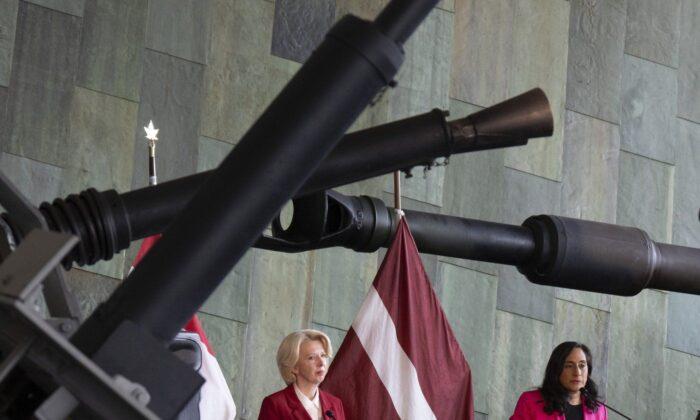That means Canada is adding a third country to its training efforts under Operation Unifier, which is already active in Poland and the United Kingdom.
Anand said it’s a reflection of Canada’s commitment to help Ukraine win the war against Russia.
“It is also a recognition that our world is growing increasingly dark, and that a year-and-a-half into the further illegal and unjustifiable invasion of Ukraine by (Russian President) Vladimir Putin, we cannot let up,” Anand said.
“This war does not seem to have an end in the near term.”
Canada has trained more than 36,000 Ukrainian Armed Forces members since 2015, the year after Russia annexed Crimea.
The program in Latvia is set to provide junior officer leadership development training for the Armed Forces of Ukraine beginning as soon as May 15.
Anand made the announcement after a bilateral meeting with Latvian Defence Minister Ināra Mūrniece in Ottawa.
Mūrniece said there is a sense of urgency in the Baltic region to maintain support for Ukraine 18 months into the Russian invasion.
“My country understands the situation. We are very close to (the) war zone,” she said.
That spending is expected to soon climb to three percent of GDP, well above the NATO alliance’s stated target of two percent.
Canada remains below that spending target at about 1.4 percent.
The Washington Post recently reported, citing confidential documents leaked online, that Prime Minister Justin Trudeau privately told NATO officials his country will never reach that goal.
That commitment was made in a joint declaration signed in June 2022, but plans are still in the early stages.
“The next stage is going to be establishing force development,” Anand said, adding that another step will be defining the critical capabilities of allied countries’ militaries.
Canada has already announced that it is urgently procuring anti-tank, anti-drone and anti-air defence systems.
Anand said she and Mūrniece met with representatives from the other 10 countries that are part of the battle group during the NATO defence ministers’ meetings in Brussels in February.
Negotiations are underway to determine what they can each contribute to a brigade.
“The process is going well,” Anand said.
That includes a recent request from Alberta to help with an early start to the wildfire season, which has led to the evacuations of thousands of people.





